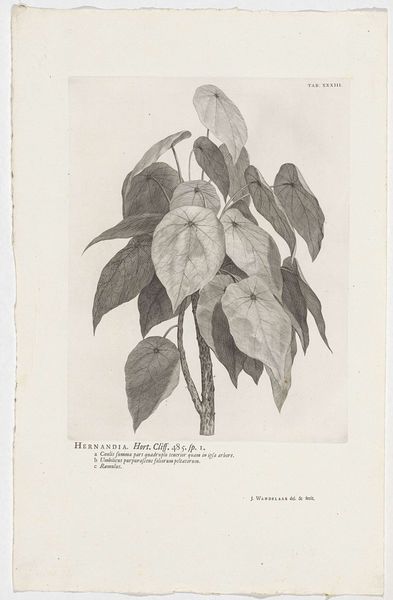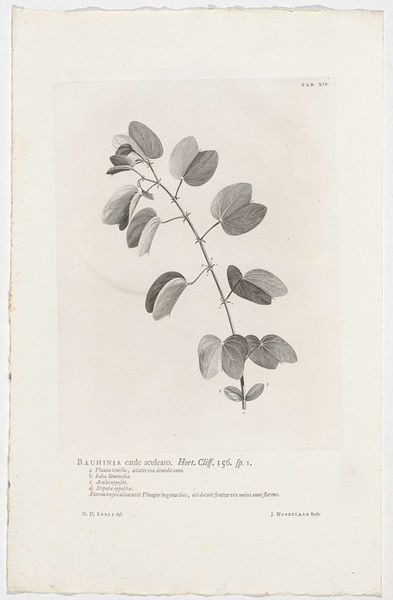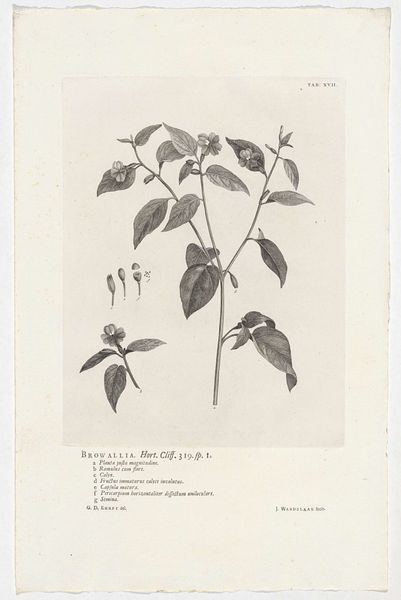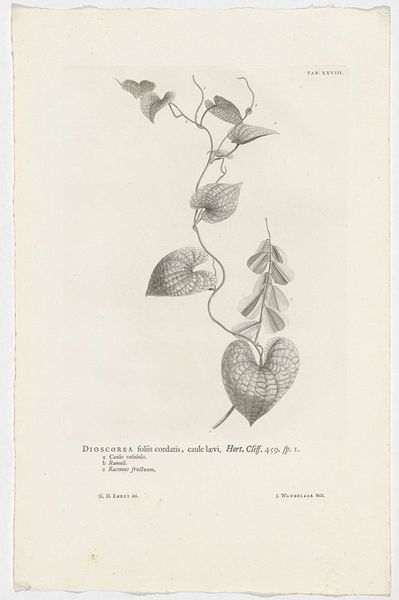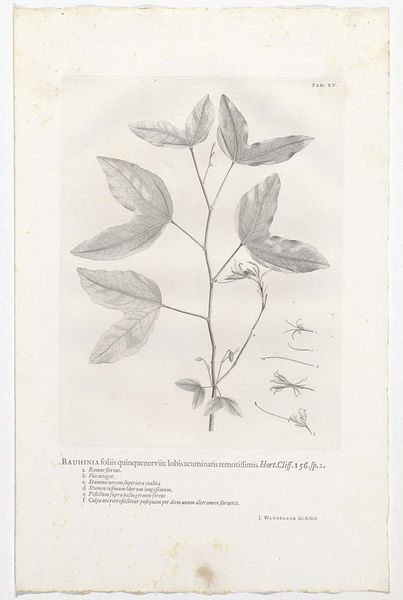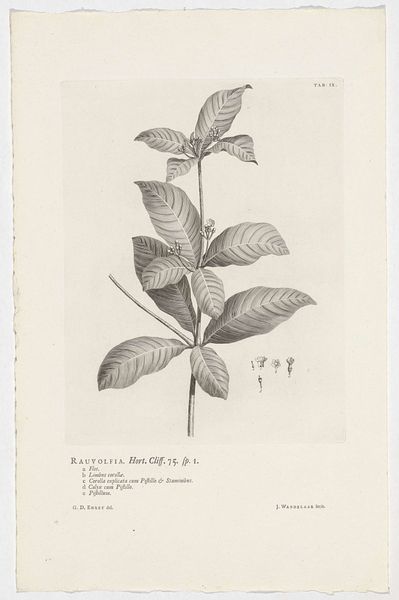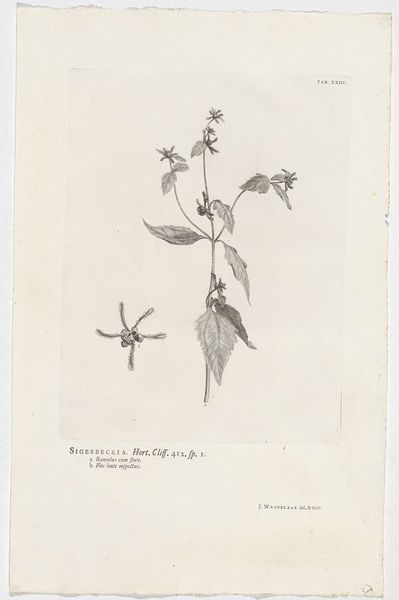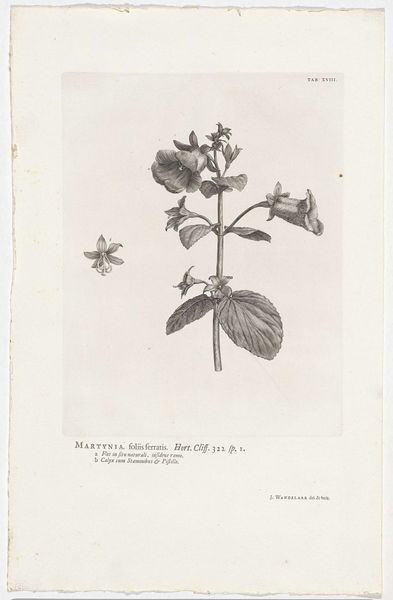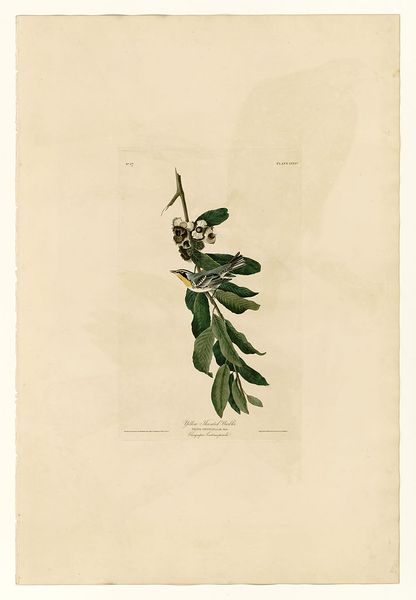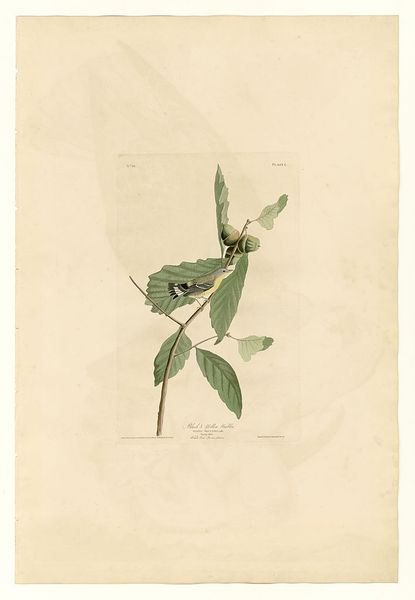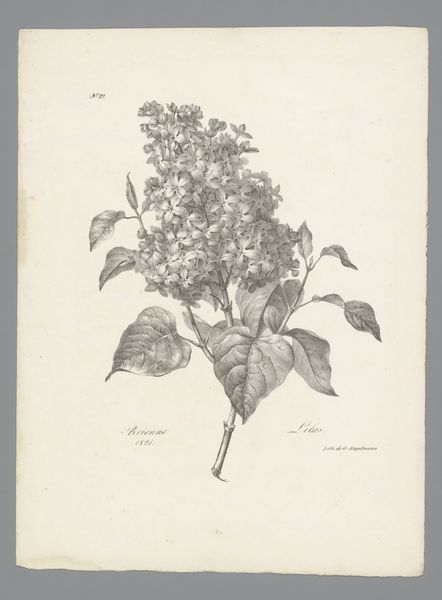
print, paper, engraving
#
baroque
# print
#
old engraving style
#
paper
#
plant
#
engraving
#
botanical art
Dimensions: height 289 mm, width 220 mm
Copyright: Rijks Museum: Open Domain
Curator: Here we have a botanical engraving by Jan Wandelaar, dating back to 1738. It's titled "Diervilla lonicera" and is currently held at the Rijksmuseum. Editor: The fine lines forming each leaf create such an intricate image, almost lifelike despite the monochrome palette. There’s a graceful simplicity in the composition. Curator: Botanical art in the Baroque era served a fascinating role, extending beyond mere representation. Works such as this were tools of scientific exploration and nascent forms of environmental documentation, circulating within learned societies. Editor: That's true, and it makes me think about the contemporary drive to catalog species on the brink of extinction. This isn’t just art; it’s early data visualization reflecting Enlightenment values, even if implicitly, of observation and categorisation of nature. How were these engravings received in their time, in relation to similar artistic endeavours or scientific illustrations? Curator: They were part of a broader trend where detailed illustrations became essential for sharing and standardizing knowledge of the natural world among scientists and collectors across continents. The scientific accuracy combined with artistic skill made them highly valued, informing both scientific progress and aesthetic tastes of the period. These kinds of botanical prints sometimes featured in grand homes to show off the patron's interests and education. Editor: It feels relevant, then, to consider the print’s existence not only as an illustration but as a symbol of its possessor's aspirations to education and, crucially, the ability to engage in the classification of the natural world. The composition’s stark simplicity arguably bolsters this intent to categorise and display. Curator: Absolutely, the choice of subject – this Diervilla plant – connects to burgeoning fields of botany and natural history. Wandelaar's attention to the texture of the leaves and the detailed rendering of the flower clusters point toward that era’s commitment to empirical observation. Editor: I find myself considering the role this kind of image might play now. Can it serve to ignite critical discourses about environmental responsibility and sustainable practices by prompting audiences to delve deeper into the history behind our relationship with nature? Curator: I certainly believe that bringing historical objects like Wandelaar's engraving into conversation with current ecological challenges highlights how the narratives we create about nature directly influence our actions. Editor: Well, seeing this engraving has me considering my role in these continued narratives.
Comments
No comments
Be the first to comment and join the conversation on the ultimate creative platform.
